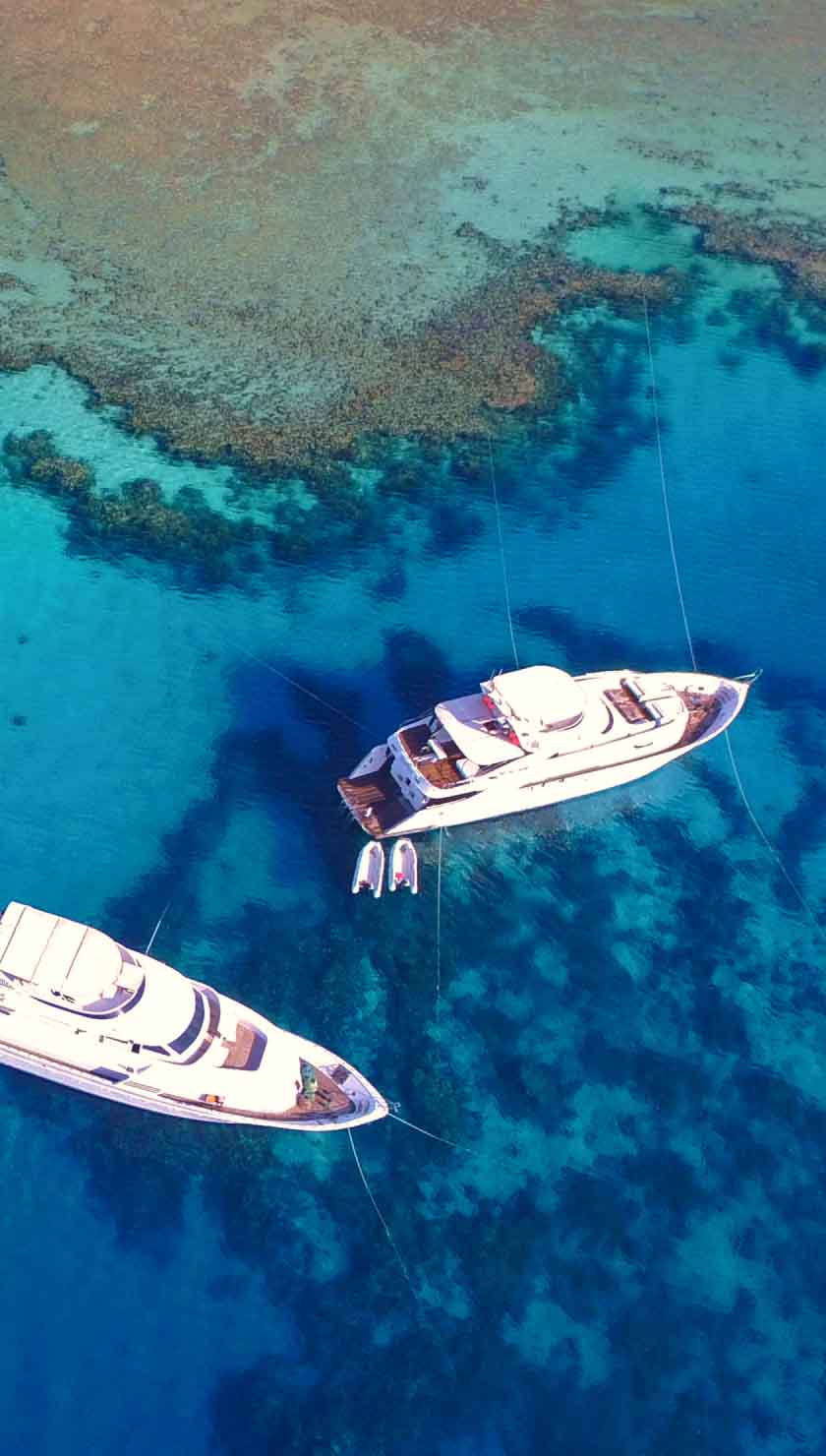Liveaboard Diving in Cousins Rock
What to expect on a Cousins Rock Liveaboard
Cousins Rock is a tiny pinnacle of rock sticking out of the water on the North East coast of Santiago Island. Santiago is a smaller island consisting of an active shield volcano right in the middle of the Galapagos. There have been lava flows observed on the island in the last 30 years but so far this has not threatened the abundant wildlife. Marine iguanas, sea lions, flamingos and fur seals all live on land in Santiago.
There is some wildlife living on Cousins Rock’s very small land area such as sea lions and sea birds but there are no land excursions, you couldn’t fit more than five people on here. Most liveaboard cruises stop off here and snorkelling and diving day trips also visit to experience the dramatic range of life here.
The underwater portion of the islet is one of the most dramatic drops in the islands. The sheer walls and slopes go down to a sandy bottom around 40 meters/ 130 ft. Along the shallower parts there are black corals growing in abundance and a stunning array of small reef creatures such as sea horses, nudibranch and more turtles than you will be able to count. The plateaus are the ideal vantage point to see huge manta rays which come surprisingly close to divers. There is also a chance you might see hammerheads and Galapagos sharks off in the blue.
Daily Schedule
Morning
Liveaboards are usually the first here and the morning dive is around 6 am. Groups will have a very light breakfast and briefing before heading to the dive deck to get ready. This is an important place to double check your Nitrox mix because it is one of the few dives where you could go deep enough to be over your limit.
The pangas will drop the groups as close to shore as possible which means a negative back roll entry because of the swell and heavy currents. The plateau is a fantastic place for spotting smaller creatures and looking over into the blue you can see some of the bigger pelagics.
The dive will be around 50-60 minutes depending on what depth you spend your time at and how strong the currents are. You should swim out into the blue for your safety stop and hopefully you will spot some hammerhead or Galapagos sharks passing below.
Afternoon
The second dive after a proper breakfast on board the boat, will be on the other side of the islet. Cousins Rock looks very small from the surface but it is actually layer upon layer of volcanic rock. The underwater area is very large and the wildlife can be varied depending on how deep you are. The second dive will be shallower and so you have a chance to play with sea lions which dive down from the shore. There are also white tip reef sharks between 10-20 meters/ 30-65 ft. which are ideal for photographers. After the dive the pangas will pick up the divers and the liveaboard will likely move to the next dive site or a land excursion.
Cousins Rock Underwater
Cousins Rock is different in underwater topography to the other islands in Galapagos. The reef here is made up of expansive plateaus with sheer drop offs. The current here can be heavy and unlike other dives in Galapagos you will feel it because you will be swimming around looking for different patches of life.
In the shallower areas you will have a creature dive extraordinaire with red lipped batfish and Giant pacific sea horses often sitting in plain view on the plateau. This is the perfect place for macro photography as the creatures are just deep enough to be away from the swell and they seem relatively unafraid of divers. Deeper down around 20 meters/65 ft., mantas come across the edge of the plateau. There are a quite a few places in the world where you can see mantas, but hardly anywhere you can see so many up close as you can at Cousins Rock.
The dive will be around 50-60 minutes if the current isn’t too strong and your safety stop should be in the blue if possible. If the visibility is good enough, you might see the mantas and even hammerheads passing by on the currents.
Top Tips for Cousins Rock
- Take a torch for this dive, light can be low because of the depth and visibility. A torch will also help you to get a good look at the giant pacific sea horses.
- Wear gloves for this dive, you will almost certainly be holding onto the rocks at some point and they are very sharp here.
- Wear good thermal protection, the water here can get very cold due to the currents. The lowest temperatures can be 16-17 degrees.
Getting to Cousins Rock
Cousins rock is a frequent visit for liveaboards and only a few hours from most of the other central island dive sites such as Punta Vicente Roca and Cabo Douglas. Your Galapagos Liveaboard will often try to get to Cousins Rock early in the morning to avoid sharing the site with other day trip dive boats. Divers will be dropped at the dive sites by panga tender because of the swell around the shoreline of the islet. Pangas are daring in their approach to the shore, but there will often be a small surface swim to get to and from the panga.











